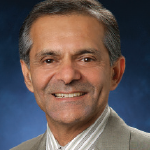The ACR will use the findings and recommendations from the workforce study, coupled with a tactical plan designed by the ACR Committee on Rheumatology Training and Workforce Issues, to inform its next strategic plan for meeting the academic and non-academic rheumatology supply and demand needs.
On behalf of the ACR, I’d like to thank the 2015 Workforce Study Group, subgroup of the ACR Committee on Rheumatology Training and Workforce Issues, co-chaired by Dr. Battafarano and Seetha Monrad, MD, from the University of Michigan at Ann Arbor, who invested countless hours to oversee this study through completion.
 Sharad Lakhanpal, MBBS, MD, is in private practice at Rheumatology Associates and a clinical professor of internal medicine at the University of Texas Southwestern Medical School, both in Dallas, where he has lived and worked since 1986. He is also the 80th president of the ACR (2016–17).
Sharad Lakhanpal, MBBS, MD, is in private practice at Rheumatology Associates and a clinical professor of internal medicine at the University of Texas Southwestern Medical School, both in Dallas, where he has lived and worked since 1986. He is also the 80th president of the ACR (2016–17).
Note: The ACR contracted the Academy for Academic Leadership (AAL), a leading firm in the area of workforce projection, to conduct the Rheumatology Workforce Study.


